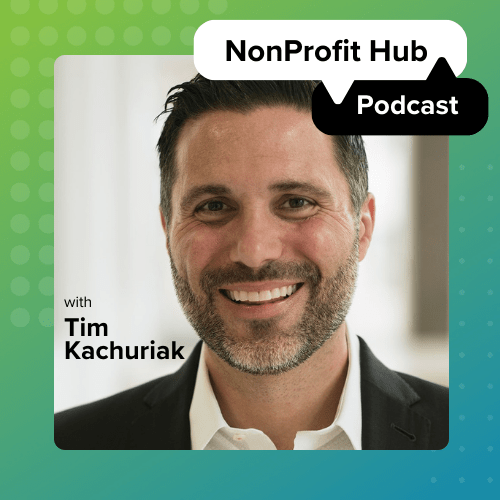When asked about his repeated failures to produce a working light bulb, Thomas Edison said, “I have not failed. I’ve just found 10,000 ways that won’t work.” Learning from your failure is invaluable, but that doesn’t make failure any less painful. Why? Because, although Edison eventually succeeded, 10,000 failed attempts don’t guarantee a working light bulb. It’s the chance that entrepreneurs and innovators take. Sometimes you’ve got to fail, but YOU don’t have to. You can learn from my mistakes instead.
But Will, you say in astonishment, you’re so smart and cool! How many mistakes could you possibly have made at a nonprofit? In short, boat loads. I have (tried to) run a nonprofit at my college, a campus magazine set up with attached 501(c)3 entity so as to give us financial flexibility and maintain independence from our student senate and Board of Publications. I was the Editor-in-Chief of our publication, which means that I spent most of my time writing, editing and doing layout for our magazine. But I was also the President of our attached nonprofit, which was a whole different animal—one that I never quite tamed.
The following is a true story, or rather a compilation of true lessons I learned from running a nonprofit (terribly). We made a lot of mistakes along the way, and hopefully there will be some tidbits of wisdom and kernels of truth for you to take away.
1) Embrace Technology
You wouldn’t think 21st century college students would have trouble taking advantage of technology, even in a print magazine, but somehow we managed to pull it off. When I came on to the scene we had an outdated, non-user-friendly website that none of us knew how to use, modify or even access because the person with the passwords had graduated four years previously. (Side note: keep a record of all passwords.)
Our publication staff was mostly made up of humanities and social science, rather than computer science guys, but come on. There are people out there with website experience and the desire to put it to use. Instead, it took us a year just to start uploading digital copies of our magazine onto Issuu. Don’t kidnap the computer science major lab-partner of a former roommate, invest in technology that is intuitive and easy for your own tech team to use.
2) Stay on Top of Social Media
Piggybacking on websites, make sure you keep your social media up-to-date with new content regularly. Except the occasional article that someone shared on our Facebook page, we rarely posted updates or photos from our events and, if we remembered, posted new issue announcements or links to digital copies on our Issuu account.
This biggest problem: no one held an official social media position. It was the responsibility of everyone (you know, because… “synergy” and stuff) and therefore the responsibility of no one. Don’t suffer from collective inaction. Make sure you have someone on your team whose job is to handle social media. It might be one small part of your marketing plan, but that doesn’t give you an excuse to half-*ss it.
3) Be a Fiscal Hawk
This is not to say that you shouldn’t spend money or even budget for growth and innovation, but I was not aggressive enough with cutting waste out of our finances. Yes, we had a treasurer—a great treasurer who brought this waste to my attention, but it took us a year to make any significant changes. For example, we were paying for a storage unit on a monthly basis that was filled with nothing but hundreds of five-year-old surplus magazines that were slowly rotting away. We were also paying for a PayPal account linked to our website—neither of which were being used by anyone. If something isn’t benefiting your NPO, fix it or axe it.
4) Fundraise! (No, But Seriously, Actually Do It)
For us, fundraising was always like a New Year’s Resolution. At our board meeting in January it sounded like a great idea and we came up with all kinds of creative tactics to raise money—but then it was suddenly June and we had done absolutely nothing. Time got away from us and we simply forgot/didn’t really care enough to do anything more than a fundraising letter around Christmas time and once a semester.
This jaded complacency came about from two mistakes. First, we had tactics but no long-term strategy. We didn’t appoint an official fundraiser, so of course it fell in the lap of the leadership team to do when we weren’t busy hounding writers, laying out the magazine or having lives. We didn’t schedule regular fundraising work. Instead we lived with a “we’ll do that sometime this semester” mentality. Secondly, our hearts just weren’t in it. True, many of us had experience fundraising, but fundraising never lit anyone’s candle like writing, event planning or debating did. Besides, we had other sources of funds.
But if you can find someone who is passionate about fundraising and sales, get them. If not, buckle down and do it anyway, because grants and donors don’t fall from trees. Trust me.
5) Engage with Your Board
Perhaps our biggest mistake was that we never asked for help. Pride in our can-do individualism, while normally an invaluable trait, was also our Achilles’ heel. Every year we had a board meeting with our founders and several other alumni and community supporters (working graduates, a retired lawyer, etc.) some calling in over conference call. We would discuss the year’s goals, incoming leadership, budget and everything else a board was expected to do.
Our mistake? We treated it like a formality, and a waste of time in the middle of winter when we were trying to get into the swing of Spring semester. Outside of our annual meeting, the board didn’t do anything to help us, and the reason is because we never asked. Our board was relatively laid back and hands off, but perhaps they shouldn’t have been. The Board of Directors is there to help! The Board of a nonprofit has to be in constant communication and cooperation, otherwise you’re just wasting each others’ time.
6) Don’t Bite Off More Than You Can Chew
To that end, don’t bite off more than you can chew. Delegate responsibility. If you don’t know how to do something, recruit someone who does. That was one of the biggest problems at our publication. Because we were all college students, turnover was inevitable, so finding new people to add to the organization always took a back seat to finding replacements for exiting seniors. Hopefully, you don’t have quite the same problem at your organization.
Leaders have strengths and weaknesses just like the rest of us, so don’t feel like you need to handle everything. If there are people around you to help you, micromanaging won’t do you any good; if there aren’t, you won’t be able to handle the weight of the world anyways. Delegate responsibility and make functions and duties absolutely clear. If someone fails, help coach them to succeed. If they repeatedly fall down on the job and a deadline is approaching, don’t be afraid to grab the reins. The key? Find people who can add value to your team, but most importantly, find people who are passionate about your cause, because they will go the extra mile to help you succeed.
Running a nonprofit is a full-time job, which must be why nonprofits run by full-time college students in between their sleeping, studying, sleeping, eating and sleeping, don’t work out as well as those that aren’t. If you’re reading this, chances are you’re not a college student (but if you are, that’s great!). My hope is that you look back at this piece reminded of some of the overlooked and taken-for-granted nonprofit basics that keep successful NPOs on track.
There are 10,000 ways to make a light bulb incorrectly, but it takes special dedication and smarts to do it right.






